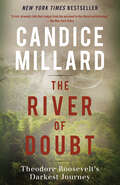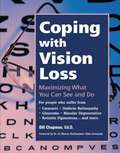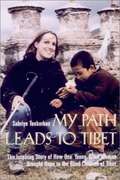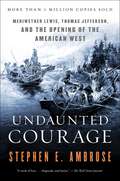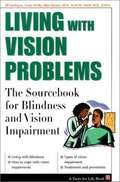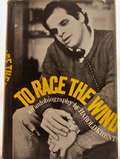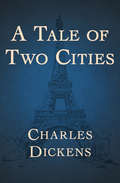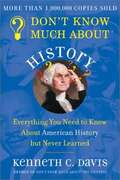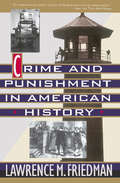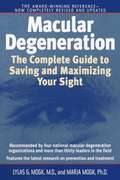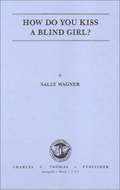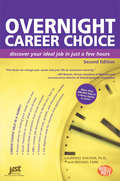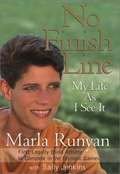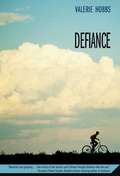Special Collections
Hadley School for the Blind Collection
Description: Recommended Reads for students at Hadley School for the Blind #disability #adults
- Table View
- List View
The River of Doubt
by Candice MillardNATIONAL BESTSELLER • At once an incredible adventure narrative and a penetrating biographical portrait—the bestselling author of River of the Gods brings us the true story of Theodore Roosevelt&’s harrowing exploration of one of the most dangerous rivers on earth.&“A rich, dramatic tale that ranges from the personal to the literally earth-shaking.&” —The New York Times The River of Doubt—it is a black, uncharted tributary of the Amazon that snakes through one of the most treacherous jungles in the world. Indians armed with poison-tipped arrows haunt its shadows; piranhas glide through its waters; boulder-strewn rapids turn the river into a roiling cauldron. After his humiliating election defeat in 1912, Roosevelt set his sights on the most punishing physical challenge he could find, the first descent of an unmapped, rapids-choked tributary of the Amazon. Together with his son Kermit and Brazil&’s most famous explorer, Cândido Mariano da Silva Rondon, Roosevelt accomplished a feat so great that many at the time refused to believe it. In the process, he changed the map of the western hemisphere forever. Along the way, Roosevelt and his men faced an unbelievable series of hardships, losing their canoes and supplies to punishing whitewater rapids, and enduring starvation, Indian attack, disease, drowning, and a murder within their own ranks. Three men died, and Roosevelt was brought to the brink of suicide. The River of Doubt brings alive these extraordinary events in a powerful nonfiction narrative thriller that happens to feature one of the most famous Americans who ever lived. From the soaring beauty of the Amazon rain forest to the darkest night of Theodore Roosevelt&’s life, here is Candice Millard&’s dazzling debut.Look for Candice Millard&’s latest book, River of the Gods.
Stars Come out Within
by Jean LittleIn this sequel to "Little by Little," (also available on Bookshare) Ms. Little shares her struggles, her hard-won successes, her sorrows and her joys. She becomes a published writer, earns awards for her books, grapples with becoming blind, acquires a talking computer, obtains a Seeing Eye dog, travels a bit, and introduces us to authors who delight her. A story beautifully written and warmly told. A fine book for a book report. An embossed braille copy should read well.
More Than Meets the Eye
by Joan Brock and Derek GillJoan Brock was a teacher at an Iowa school for the blind when her life was nearly prefect. Then tragedy struck not once but twice. Most people would have wallowed in self pity and asked Why me? This courageous woman decided to face her challenges and ask Why not me? Her story is to say the very least inspirational.
Coping with Vision Loss
by Bill ChapmanLegally blind for 30 years, Chapman explains fundamental facts about eyes and vision, including the causes and varieties of blindness. He also examines the new skills the partially sighted person must learn. Specific approaches and devices are covered in depth, including "eccentric viewing" and driving with telescopic glasses.
The Hadley School for the Blind Adult Continuing Education and High School Courses Catalog
by The Hadley School for the BlindThe mission of The Hadley School for the Blind is to promote independent living through lifelong, distance education programs for individuals who are blind or visually impaired, their families and blindness service providers. Hadley offers courses free of charge to its blind and visually impaired students and their families and affordable tuition courses to blindness professionals. The Continuing Education Program (ACE) offers a variety of courses that cover topics ranging from braille and academic studies to independent living, life adjustment, technology, business and employment skills and recreation. The High School Program (HS) features academic courses and electives for students who seek to earn a high school diploma. Students can earn high school credit, which is easily transferred to their local schools, or earn a diploma through Hadley.
Flutes Beyond the Day
by Richard KinneyA small book of poems dedicated to Don Hathaway and copyrighted in 1953
My Path Leads to Tibet
by Sabriye TenberkenDefying everyone's advice, armed only with her rudimentary knowledge of Chinese and Tibetan, Sabriye Tenberken set out to do something about the appalling condition of the Tibetan blind, who she learned had been abandoned by society and left to die. Traveling on horseback throughout the country, she sought them out, devised a Braille alphabet in Tibetan, equipped her charges with canes for the first time, and set up a school for the blind. Her efforts were crowned with such success that hundreds of young blind Tibetans, instilled with a newfound pride and an education, have now become self-supporting. A tale that will leave no reader unmoved, it demonstrates anew the power of the positive spirit to overcome the most daunting odds.
Undaunted Courage
by Stephen E. AmbroseIn this sweeping adventure story, Stephen E. Ambrose, the bestselling author od D-Day, presents the definitive account of one of the most momentous journeys in American history. Ambrose follows the Lewis and Clark Expedition from Thomas Jefferson's hope of finding a waterway to the Pacific, through the heart-stopping moments of the actual trip, to Lewis's lonely demise on the Natchez Trace. Along the way, Ambrose shows us the American West as Lewis saw it -- wild, awsome, and pristinely beautiful. Undaunted Courage is a stunningly told action tale that will delight readers for generations.
Living with Vision Problems
by Jill Sardegna and Susan Shelly and Allan Rutzen and Scott M. SteidlMillions of Americans have a significant level of vision impairment. This revised edition of Living with Vision Problems is designed to provide students with helpful information such as: how to cope, causes and types of vision impairments, preventions, treatments and even LASIK procedures. It is an extensive sourcebook for all topics, including medical, concerning blindness.
To Race the Wind
by Harold KrentsThe autobiography of Harold Krents, a young blind man who was a well-known lawyer in the early 1970's. Harold was the inspiration for the film and play, Butterflies Are Free.
A Tale of Two Cities
by Charles DickensThe premier novel of the French Revolution, by England&’s greatest authorSet against the bloodthirsty backdrop of revolutionary France, this monumental saga—one of the most famous works in all of literature—is at its heart the story of a beautiful woman and the two men who compete for her love: Charles Darnay, a French aristocrat who renounces his heritage, yet stands accused of treason in the rush to the guillotine, and Sydney Carton, a disillusioned English barrister who finds his salvation in the ultimate act of sacrifice.Full of rich historical details and populated by a sprawling cast of characters, Charles Dickens&’s masterwork is epic in every sense of the word. Yet its finest achievement may be the intimate moments shared by three people who have the foresight and the courage to see beyond the chaos that surrounds them. A novel whose contradictions are laid bare from the very start—&“It was the best of times, it was the worst of times&”—A Tale of Two Cities is the stuff of life, and great art. This ebook has been professionally proofread to ensure accuracy and readability on all devices.
Don't Know Much About History
by Kenneth C. DavisThe author describes the rollicking ride through more than 500 years of American history. In this updated edition of the classic anti-textbook, he debunks, recounts, and serves up the real story behind the myths and fallacies of American history.
Crime And Punishment In American History
by Lawrence FriedmanIn a panoramic history of our criminal justice system from Colonial times to today, one of our foremost legal thinkers shows how America fashioned a system of crime and punishment in its own image.
Macular Degeneration
by Lylas G. Mogk and Marja MogkDr. Lylas Mogk has a unique personal and professional understanding of AMD. This book explains how to successfully manage and limit its effect on a persons life.
Pacemaker General Science (3rd edition)
by Globe FearonThis book teaches about three different areas of science: life science, physical science, and earth science. You will learn about living things, including plants and animals. You will study motion and forces, such as those that affect a thrown baseball and a roller coaster racing along on its track. You will come to better understand the features of the Earth, including its oceans and moon. When you finish this book, you will be prepared to continue studying any field of science you choose. You will be on the road to success in the 21st century.
How Do you Kiss a Blind Girl?
by Sally Roesch WagnerSally Wagner grew up in Prairie Village, Kan., and received a B.A. in English from Grinnell College. She taught high school English in Lakewood, Colorado, and re ceived an M.A. in journalism from the University of Colorado. She turned from teaching to journalism, but within months came the first signs of what led to blindness three years later.
With Andy, her golden retriever dog guide from the Seeing Eye, she took a public relations post, returned to reporting and collected the anecdotes which drew her back to Prairie Village to write this book. Wagner, 42, now covers a police beat for the Kansas City Times from her Prairie Village apartment.
Overnight Career Choice
by Laurence Shatkin and Michael FarrThis book provides more than 275 job descriptions with information on each job's pay, growth, openings, education level, and skills needed. Additional information about major industries opens readers' eyes to different sectors where they may be able to build a rewarding career.
No Finish Line
by Sally Jenkins and Marla RunyanMarla Runyan was nine years old when she was diagnosed with Stargardts disease, an irreversible form of macular degeneration. With the uneasy but unwavering support of her parents, she refused to let their diagnosis limit her dreams. Despite her severely impaired, ever-worsening vision, Marla rode horseback and learned to play the violin. And she found her true calling in sports. A gifted and natural athlete, Marla began to compete in the unlikeliest event of all: the heptathlon, the grueling womens equivalent of the decathlon, consisting of seven events: the 200-meter dash, high jump, shot put, 100-meter hurdles, long jump, javelin throw, and 800-meter run. In 1996, she astonished the sports world by qualifying for the U.S. Olympic Trials, in which she broke the American record for the heptathlon 800. It was then that she decided to concentrate on her running. Four years of intense effort paid off: in 2000, she qualified for the U.S. Olympic team by finishing third in the 1500 meters. In Sydney, she placed eighth in the finals and was the top American finisherthe highest womens placing for the United States in the events history. Not long after her return to the States, she shattered the American indoor record for the 5000 meters. With endearing self-deprecation and surprising wit, Marla reveals what its like to see the world through her eyes, how it feels to grow up disabled in a society where expectations are often based on perceived abilities, and what it means to compete at the world-class level despite the fact thatquite literally, for herthere is no finish line.
Defiance
by Valerie HobbsEleven-year-old Toby Steiner wants to do normal things on his vacation. He wants to hike and race his bike down the hill. He wants to learn to fish out on the lake. He doesn't want to return to the children's hospital where his painful cancer treatment finally ended. When Toby starts spending time with Pearl, a spunky old woman who lives on a nearby farm, and Blossom, her broken-down cow, he sees all the more reason to keep the new lump on his side a secret from his parents. From Pearl he discovers the beauty of poetry, and from Blossom he just might uncover the meaning of life.
Foundations of Low Vision
by Anne Corn and Jane N. ErinThe editors and contributors of this book provide an examination of the clinical and functional perspectives of low vision. New to the second edition are revisions in all areas, state-of-the-art technology, a reorganization to examine in more depth the needs of individuals in different age ranges, new charts, certification requirements for low vision therapists, and information on pathology, early development, and discussion of the relationship between the vision and the brain.
Art Not by Eye
by Yasha LisencoThe book, in two parts, deal with avenues for adventitiously blind adult, and the blind and severely visually impaired adults in the art program.
The Psychology of Self-Esteem
by Nathaniel BrandenSelf-esteem or self-evaluation determines the way we tackle every aspect of our lives. "Positive self-esteem operates, in effect, as the immune system of consciousness, providing resistance, strength, and a capacity for regeneration." (Nathaniel Branden)
White Coat, White Cane
by David Hartman and Bernard AsbellThe woman's arthritic fingers feel gnarled and crooked, her knees lumpy rocks. But I can detect no swelling, so I press here, there, trying to rouse an inflamed spot. "What are you doing"she challenges. "You're blind!"
"I'm examining you. Haven't you ever been examined by a blind doctor before?"
She refuses to be humored. "That's silly. What can a blind doctor do?"
"I'm not sure, but we're going to find out..."
When David Hartman, blind since the age of eight, announced his intention to become a doctor, the reactions ranged from sympathy to ridicule. How could he diagnose his patients? Examine them, except by touch? Look through a microscope? Even understand what was being described?
The battle lines were drawn: David and his family on one side, the schools and society on the other. But with an incredible strength of purpose, David Hartman went on to become the first blind person in over 100 years to enter medical school. What is it like to adjust to a world of darkness? David Hartman lets us know bluntly, with real emotion, insight, and humor. He had to relearn the simplest things. He had to overcome mental obstacles that were at times more formidable than the physical ones. Yet he was determined to reach beyond his difficulties to fulfill an impossible dream.
His teachers were helpful, hostile, embarrassed, unsure-and in medical school he had to work twice as hard. The work had to be read to him or translated into Braille. Often he had to rely on a sighted person to confirm his diagnosis, and he needed a nurse to read the patients' charts to him. But he utilized all his other senses to achieve his greatest desire: helping to heal. His journey is a moving and inspirational story for us all.
Abacus Basic Competency
by Susan M. MillawayLearn the parts of an abacus, how to "set" numbers and how to do calculations! There are competency tests with answers in the back of the book.
